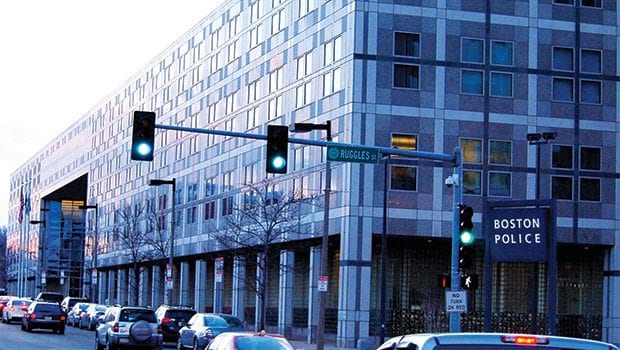Police still stop people of color at higher rates, data shows
New data shows rates for 2015 to early 2016; reflects little change over 2011 to 2015 rates

The city in 2014 made available years of data that bore evidence to a disproportionate tendency of police to stop people of color, compared to white residents. Civil rights activists have long reported what they say is a trend of police violating black residents’ constitutional protection against unlawful search and seizure. But despite Police Commissioner Bill Evans’ assurances of reforms, new data suggests little has changed. The Associated Press has released an analysis comparing prior data on police stops during 2011-2015 with new data on such stops occurring between 2011 and early 2016.
On the web
Read the Banner’s article on secret ‘gang’ labeling: http://baystatebanner.com/news/2015/sep/23/gang-label-poorly-understood-serious-consequences-/
Between the earlier set of years, 2011 and 2015, people of color comprised about 73 percent of all civilians that Boston police stopped on the street, while comprising only 53 percent of the city population, according to 2010 census data. Since that police stop information became available, the rate of stops has dropped only slightly if at all, according to new data reflecting 2015 to early 2016.
Between 2015 and early 2016, at least 71 percent of those subjected to field interrogation, observation, frisks and/or searches were people of color, according to the Associated Press analysis. With more than 7 percent of such reports not recording race information, that rate could be even higher. Meanwhile, people of color still comprised only about 55 percent of the city’s population in 2015, according to American Community Survey estimates.
Rahsaan Hall, director of the racial justice program at the ACLU of Massachusetts, said the findings do not surprise him.
“The challenge the Boston Police Department has is that they suffer from this notion of exceptionalism. Because so many people across the nation praise and laud them for their community policing models, they think they’re free from having to do deep changes to their policing practices,” Hall told the Banner. “I think that’s why we see such a marginal reduction in the disparities.”
Stops without arrests
The disparity is especially stark for black residents in particular.
Initial analysis of the 2011-2015 data showed that black residents disproportionately were represented among stops that did not produce an arrest (that information has not yet been presented for 2015-2016.) During the 2011-2015 time period, blacks received about 58.5 percent of all such stops, even though blacks comprised only slightly more than 24 percent of the population, according to 2010 census data. The AP analysis states that while the average percent of stops of black residents during 2011-2015 represents a decline over the rate of previous four years (63 percent), there has been little to no improvement between individual years for 2011 to 2015.
The impact can damage the police’s effectiveness by damaging community relations, ACLU attorney Carl Williams told the AP.
“People feel uncomfortable talking with police when they feel they’re getting stopped unjustly,” Williams said.
The fourth amendment bars search and seizure of a person without reasonable suspicion that they have committed, are about to commit or are in the act of committing a crime. Civil rights advocates and Boston residents of color often say that police transgress this protection. The latest data includes more information than the 2011-2015 records did on why people were stopped, which could lay the groundwork for better monitoring and reaction to such instances. According to the most recent data, from 2015 to early 2016, 21 percent of stops were due to “reasonable suspicions” and 31 percent were due to “probable cause.” However, information is lacking on the percentage of the stops that actually produced arrests or seizures.
Incomplete picture?
Further analysis of the data is forthcoming: Anthony Braga, head of the criminal justice school at Northeastern University, told the AP that he and other independent researchers who are analyzing the 2011-2015 data are awaiting more information from the police before they conclude their study. He cautioned against drawing conclusions from raw data before the study is complete, and said the AP analysis was “overly simplistic, woefully incomplete and, quite frankly, irresponsible.”
BPD spokeperson Michael McCarthy told the AP it was irresponsible to not factor into the analysis details that were not included in the report. Such critical factors include neighborhood crime statistics and the history of detained individuals, such as their prior arrests and any gang affiliation, he said. The BPD did not respond to a Banner request for further comment.
The ACLU’s Hall, however, says that researchers have demonstrated that even when controlling for crime rates, there was a significant racial disparity in 2011-2015 stops.
“That justification then goes out the window,” Hall said. “It is important to look at what communities are being criminalized and what types of efforts are invested in stopping people and surveying people for things that are low-level offenses that don’t warrant the level of policing that they garner.”
Activists also have questioned the department’s loose definition of “gang-affiliated,” noting that many teens who are not members of gangs are labeled as such and are given no opportunity to clear their names.






